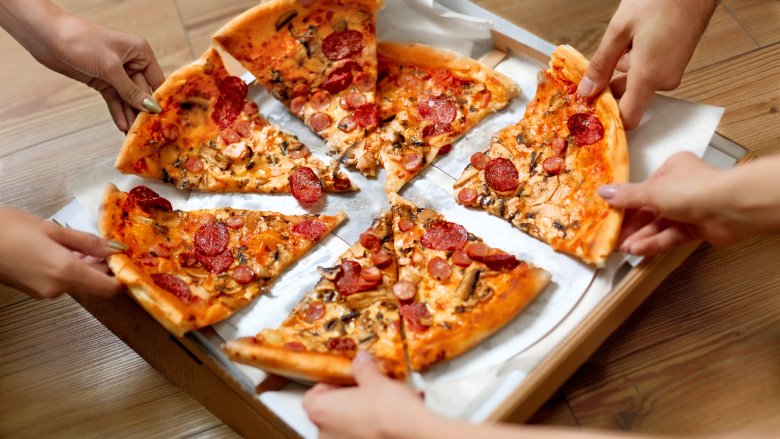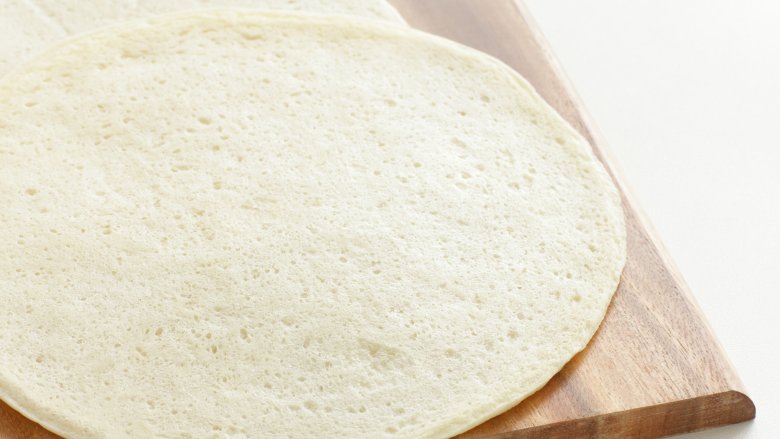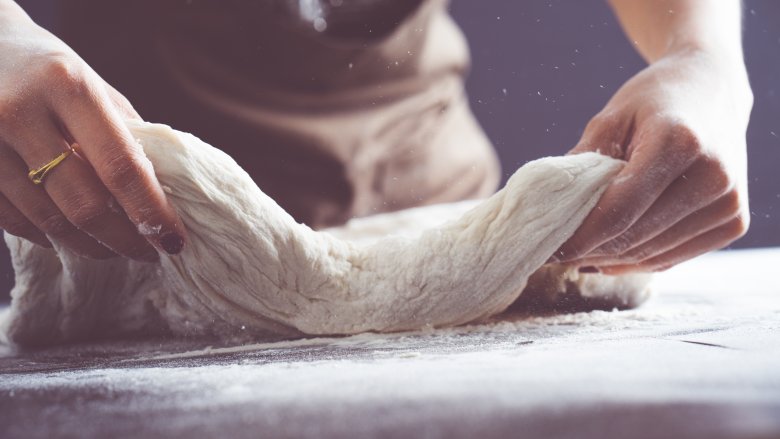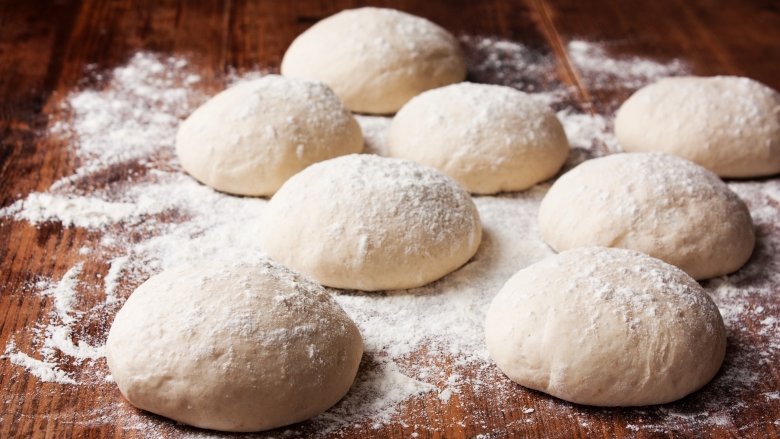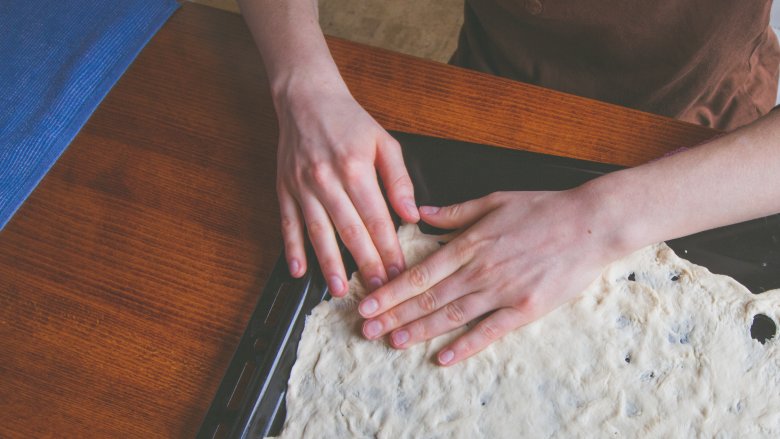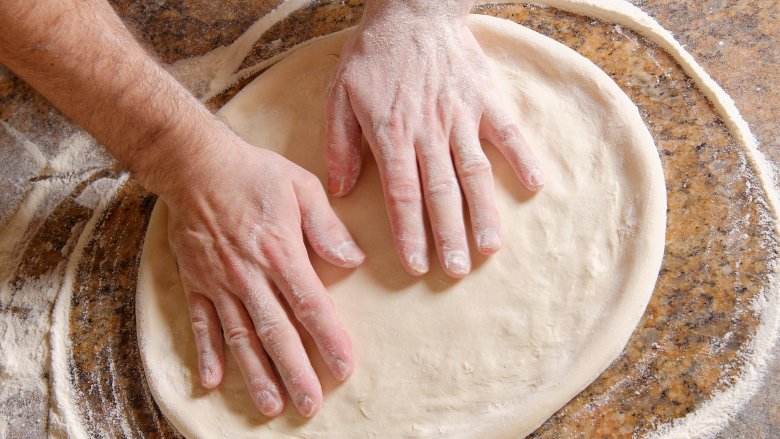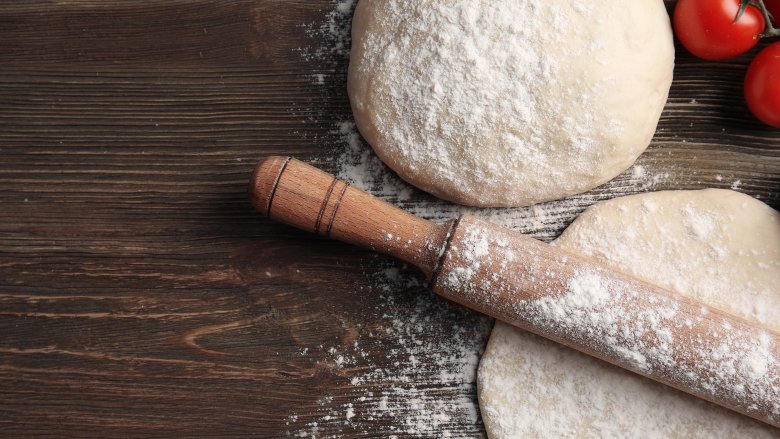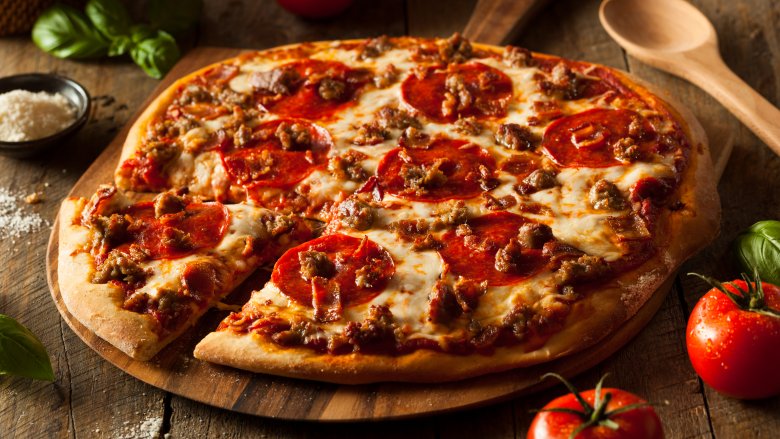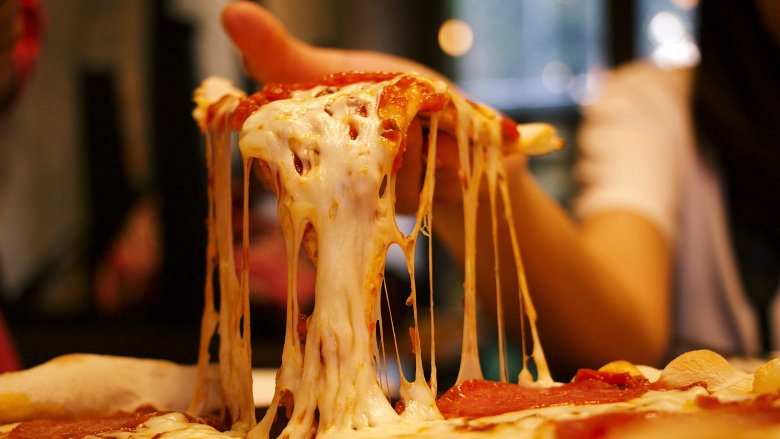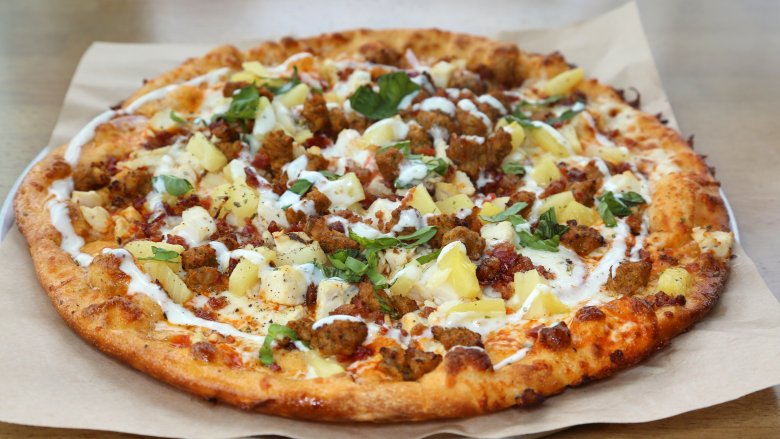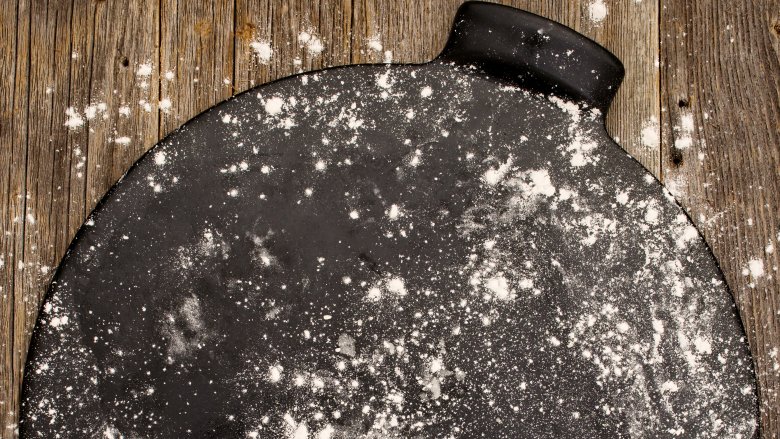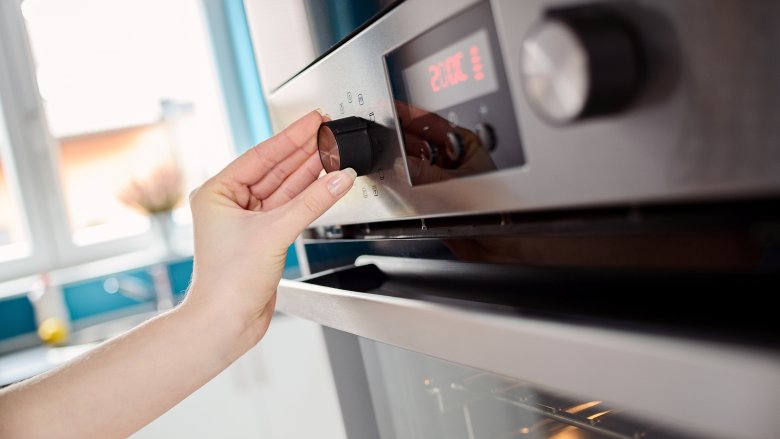Ways You're Screwing Up Your Homemade Pizza
Pizza night is the best night of the week and making your own is simpler than you think. Preparing a homemade pizza — even on a weeknight — doesn't really take much more work than picking up a pie from your local pizzeria or even baking up a frozen one (but please don't). And of course, a pizza made by your own hands will taste loads better than any pizza that's ever been delivered to your door — if it's done right, of course.
However there are plenty of tiny steps that could trip you up, or make things much more complicated than they need to be. Rather than slightly (or totally) messing up your homemade pizza yet again, be careful to avoid these classic pitfalls and you'll be rewarded with a better-than-ever pizza — no phone, takeout menu, or trip to the frozen pizza aisle required.
You use a low-quality pre-made crust
Most grocery stores sell all manner of pre-made pizza crusts. From frozen options to those shrink-wrapped crusts on the ends of the pasta aisles, pre-made pizza crusts are easy to find, but often far less than your tastiest option. According to Serious Eats, if making your own dough is out of the question, consider calling your favorite pizza joint to ask if they'll sell you a bit of their dough, pick up a refrigerated dough from the grocery store, or even use a tortilla or other wrap for an extra-thin variety. All of these are better options than a disappointing pre-made crust, we promise.
You don't add enough salt
Salt has taken a lot of heat lately, but because it's a flavor enhancer, it's key to better-tasting food. As Bon Appétit's senior food editor pointed out, without the addition of salt, flour isn't very tasty. Given that traditional pizza crusts (you know, not the cauliflower and kale versions) are made nearly entirely from flour, salt is essential. If you don't add enough, your crust will be bland. Don't get too heavy-handed, however, because if you're adding many salty cheeses, anchovies, olives, ham, or anything else that's salty on its own, the resulting pizza will basically just be a salt bomb.
You don't rest your dough before shaping
While it might be tempting to pull the dough out of the refrigerator and immediately get to work pulling, stretching, and shaping the dough, topping it with ingredients, and quickly throwing it in the oven, try to refrain from doing so. Make sure you let the dough rest on the counter for about half an hour to let it come closer to room temperature and make it easier to stretch gently. According to Food52, resting your dough at room temperature will make the shaping a much smoother process.
You stretch the dough too thin
You don't want to finished crust to be too thick, but (believe it or not) there is such a thing as too thin, too. According to The Kitchn, 1/8 to 1/4 of an inch thick is the perfect thickness for a thin crust pizza that won't wilt under the weight of the sauce and toppings.
You don't stretch the dough enough
If you didn't let the dough rest enough and now you're fighting it as you try to stretch it and shape your pizza, it can be tempting to stretch it what you think is as much as possible and just say, "good enough." Trust me, though, if somewhere in the back of your mind you're questioning if the dough is stretched thin enough, it likely isn't. You'll be disappointed in the finished product if it's too thick and is under-baked in the center. Be patient. Leave it alone to rest a little longer if you can, take a break to relieve your frustration, and come back to it when it's more pliable and easier to handle.
You use a rolling pin to roll out your dough
Using a rolling pin for pizza dough really should be a last resort. Hand stretching is ideal. According to Bon Appétit, rolling out your pizza dough with a rolling pin will likely make the crust dense and tough rather than light and chewy. A dense, tough crust will just make you sad. If you're fighting your dough, again, let it rest a bit longer and then resume shaping.
You don't pre-cook any toppings
Pre-cooking toppings takes a tiny bit more effort than throwing them on top of the pizza raw, so I understand why you might be reluctant to do so on a weeknight when you're tired and you just want to eat. That being said, par-cooked, salted, or pre-cooked toppings can make a pizza ultimately taste better and also potentially protect you from food-borne illness. According to The Kitchn, pre-cooking any meats before putting them on your pizza will ensure they're cooked through, making it less likely that you'd get sick from eating them. Greens, basil, and tough veggies could also benefit from a quick pre-cook.
You add too much cheese
Cheese is really delicious and gets gooey when melted, so it's understandable why you'd want plenty of it on your pizza, but, believe it or not, there is such a thing as too much cheese on a pizza. As J. Kenji Lopez-Alt and Serious Eats explains, not only can too much cheese skew the balance of flavors on your pie, but lots of ooey gooey melty cheese can really weigh down your slice. Since you're taking the time to make your homemade pizza great, you don't want to mask all the other flavors that are there — or destroy the crispiness of your crust. If you want to eat cheese, just eat cheese.
You add too many toppings
Honestly, less is more when it comes to pizza toppings. Pick a few veggies or meats that go well together and stick with them. Adding too many toppings can also throw off the flavor balance and weigh things down, making your crust soggy — a surefire way to ruin your otherwise perfect homemade pizza. Choose only a couple — everything doesn't have to go on every pizza. You can always change up your topping selection next time.
You don't preheat the pizza stone or sheet pan
While you preheat the oven, preheat the pizza stone or sheet pan that you'll bake your pizza on as well. This will help the bottom of the crust get all nice and crispy, which is just what you want for your perfect homemade pizza. If you forget to preheat the pan, add a few glugs of oil, which will help crisp up the crust while baking.
According to Bon Appétit, a good way to move your pizza from the counter to the oven is by a sheet of parchment paper. Craft your pizza on top of the parchment, then set it directly on the stone or pan in the oven. The parchment paper can withstand the heat of the oven. Once the pizza is done cooking, you can also remove it from the oven using the parchment paper. Leave your stone in the oven to cool down — you don't want it to crack from a drastic change in temperature.
You set the temperature too low
Pizzas cook best at high temperatures. Your home oven probably doesn't get as hot as a the one at your local pizzeria, but that doesn't mean you can't make great pizza from scratch. Crank your oven up to around 500 degrees Fahrenheit, says The Kitchn. High heat means the pizza cooks quickly and becomes crispy on the outside and chewy on the inside. You'll think your pizza came from your favorite local spot, not from inside your oven.
